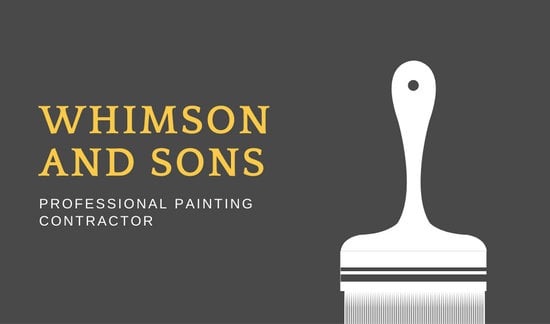Elements To Think About For Commercial Outside Paint By Period: Vital Details You Should Have
Elements To Think About For Commercial Outside Paint By Period: Vital Details You Should Have
Blog Article
Authored By-Doherty Rosendal
When you're preparing a commercial external paint task, seasonal variables can make or break your results. You'll want to consider just how temperature and moisture effect paint application and drying times. Choosing the appropriate season can guarantee your paint adheres properly and lasts longer. Yet which periods are really the most effective for this sort of job? Let's check out the crucial elements that can affect your project's success.
The Impact of Temperature on Paint Application
When you're intending an industrial exterior paint project, the temperature level can significantly influence just how well the paint adheres and dries out.
Preferably, you want to repaint when temperatures vary between 50 ° F and 85 ° F. If it's as well chilly, the paint may not heal properly, resulting in concerns like peeling off or splitting.
On the other side, if it's also hot, the paint can dry out too quickly, preventing correct adhesion and resulting in an unequal finish.
You need to also think about the moment of day; early morning or late afternoon provides cooler temperature levels, which can be a lot more desirable.
Always check the manufacturer's suggestions for the details paint you're using, as they typically offer support on the optimal temperature range for optimal results.
Humidity and Its Result on Drying Times
Temperature level isn't the only ecological variable that affects your commercial outside painting job; humidity plays a substantial duty also. High humidity degrees can slow down drying times significantly, influencing the overall quality of your paint job.
When the air is filled with moisture, the paint takes longer to cure, which can cause problems like poor adhesion and a higher risk of mold growth. If you're painting on an especially humid day, be gotten ready for extended delay times in between layers.
It's essential to keep an eye on local climate condition and plan appropriately. Preferably, aim for humidity degrees in between 40% and 70% for optimal drying.
Maintaining these factors in mind guarantees your task remains on track and delivers a lasting finish.
Best Seasons for Commercial Exterior Paint Projects
What's the very best season for your industrial outside paint projects?
try this out and very early fall are commonly your best bets. During these periods, temperature levels are light, and moisture degrees are commonly lower, developing excellent problems for paint application and drying.
Avoid summer season's intense heat, which can trigger paint to dry as well quickly, resulting in bad attachment and surface. Similarly, wintertime's cool temperatures can prevent correct drying and healing, taking the chance of the long life of your paint work.
Aim for days with temperature levels in between 50 ° F and 85 ° F for ideal outcomes. Remember to inspect the neighborhood weather forecast for rainfall, as wet conditions can spoil your job.
Planning around https://housepaintersnearme32119.prublogger.com/33567640/tips-for-readying-your-home-before-professional-residence-painters-get-here ensures your paint project runs efficiently and lasts much longer.
Final thought
In conclusion, preparing your commercial outside painting tasks around seasonal considerations can make a considerable difference in the outcome. By scheduling job during the ideal temperatures and moisture degrees, you'll guarantee better adhesion and drying out times. Remember to keep an eye on regional weather report and choose the right time of year-- springtime and very early loss are your best choices. Taking these steps will assist you accomplish a sturdy and professional coating that lasts.
